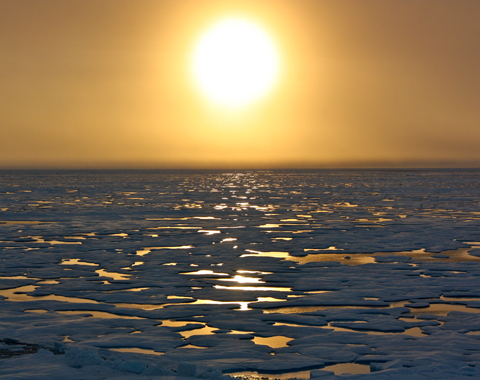
Based on contributions of more than 530 scientists from 60 countries,
NOAA found Earth’s atmospheric greenhouse gas concentrations
and sea levels both hit record highs in 2020.
NOAA Reports Warns Atmospheric CO2 Levels
Highest in 800,000 Years
Kenny Stancil / Common Dreams
Bolstering the case for meaningful climate action, a major report released Wednesday found that Earth’s atmospheric greenhouse gas concentrations and sea levels both hit record highs in 2020.
Based on the contributions of more than 530 scientists from more than 60 countries and compiled by the US National Oceanic and Atmospheric Administration (NOAA), State of the Climate in 2020 is the 31st installment of the leading annual evaluation of the global climate system.
“The major indicators of climate change,” officials from NOAA’s National Centers for Environmental Information pointed out in a statement, “continued to reflect trends consistent with a warming planet. Several markers such as sea level, ocean heat content, and permafrost once again broke records set just one year prior.”
“Annual global surface temperatures were 0.97°–1.12°F (0.54°–0.62°C) above the 1981–2010 average” in 2020, said NOAA, making last year one of the three warmest on record “even with a cooling La Niña influence in the second half of the year.”
Last year was the warmest on record without an El Niño effect, and “new high-temperature records were set across the globe,” NOAA said. The agency added that the past seven years (2014-2020) had been the seven warmest on record.
Although the coronavirus-driven economic slowdown resulted in an estimated 6% to 7% reduction of carbon dioxide (CO2) emissions in 2020, the global average atmospheric concentration of CO2 increased to a record high of 412.5 parts per million. The atmospheric concentrations of other major greenhouse gases (GHG), including methane and nitrous oxide, also continued to climb to record highs last year despite the pandemic.
According to NOAA, last year’s CO2 concentration “was 2.5 parts per million greater than 2019 amounts and was the highest in the modern 62-year measurement record and in ice core records dating back as far as 800,000 years.” Moreover, “the year-over-year increase of methane (14.8 parts per billion) was the highest such increase since systematic measurements began.”
In addition, global sea levels continued to rise, surpassing previous records.
“For the ninth consecutive year,” said NOAA, “global average sea level rose to a new record high and was about 3.6 inches (91.3 millimeters) higher than the 1993 average,” which is when satellite measurements began. As a result of melting glaciers and ice sheets, warming oceans, and other expressions of the climate crisis, the “global sea level is rising at an average rate of 1.2 inches (3.0 centimeter) per decade.”

Other notable findings of the new report include:
• Upper atmospheric temperatures were record or near-record setting.
• Oceans absorbed a record amount of CO2, global upper ocean heat content reached a record high, and the global average sea surface temperature was the third highest on record.
• The Arctic continued to warm at a faster pace than lower latitudes — resulting in a spike in carbon-releasing fires — and minimum sea ice extent was the second smallest in the 42-year satellite record.
• Antarctica witnessed extreme heat and a record-long ozone hole.
• There were 102 named tropical storms during the Northern and Southern Hemisphere storm seasons, well above the 1981–2010 average of 85.
In contrast to the release less than three weeks ago of the latest assessment from the United Nations’ Intergovernmental Panel on Climate Change, which warned that fossil fuel emissions are intensifying extreme weather disasters — provoking a flurry of reactions and even garnering a short-lived uptick in corporate media’s coverage of the climate emergency — NOAA’s new report was met with less fanfare.
In one of the few early statements issued by members of Congress in response to the report, Rep. Eddie Bernice Johnson (D-Texas) said that “scientists sounded the alarm on the climate crisis again.”
“It is clear that without swift action, we can, unfortunately, expect to set new records like these every year,” said Johnson, chair of the House Committee on Science, Space and Technology. “The consequences of climate change impact every American — especially disadvantaged communities — across the country — from the devastating floods in Tennessee a few days ago to the record-breaking wildfires in the West.”
“Building a better future for all means acting on climate now,” the lawmaker added. “This situation is urgent, but it’s not hopeless. We have an opportunity to lead the global response in the fight against the climate crisis — we cannot afford to waste it.”
How the World’s First CO2 Pipeline Explosion
Turned a Mississippi Town Into ‘a Zombie Movie’
(August 28, 2021) — In February of last year, a CO2 pipeline exploded, engulfing Satartia, Mississippi in a noxious green fog that left residents confused, convulsing, foaming at the mouth and even unconscious — an episode that augurs danger for what could be a coming wave of new CO2 pipelines across the country, a 19-month investigation by HuffPost and the Climate Investigations Center reveals.
The reporting comes as the oil and gas industry is seeking to reinvent themselves, or at least their public image, through massive carbon capture and storage (CCS) investments that would include a whole new network of pipelines.
If and when these pipes leak, they will send clouds of CO2 (and in this specific case, poisonous hydrogen sulfide, which gave the cloud its green hue, rotten egg smell and particularly noxious respiratory impacts) into the surrounding environment, where it will displace the lighter air at ground level and threaten to cause “air hunger” and asphyxiate every oxygen-breathing organism incapable of escaping the area — made harder by the fact that gas- and diesel-powered cars also need oxygen to work.
“It was almost like something you’d see in a zombie movie — they were just walking in circles,” sheriff’s officer Terry Gann told HuffPost, while survivor Hugh Martin said the “only thing I been through worse than this was the gas chamber when I was in the Army training for Desert Storm, and that was cyanide gas.”
Bad as that may sound, though, the situation could have been significantly worse, as they actually “got lucky,” as Yazoo County Emergency Management Agency director Jack Willingham explained. “If the wind blew the other way, if it’d been later when people were sleeping, we would have had deaths.”
The Verge called its competitor’s reporting a “scathing investigation of the company, Denbury, that operates the pipeline,” and its headline exhorted readers to “Go read the harrowing story of the world’s first CO2 pipeline explosion.”
Posted in accordance with Title 17, Section 107, US Code, for noncommercial, educational purposes.